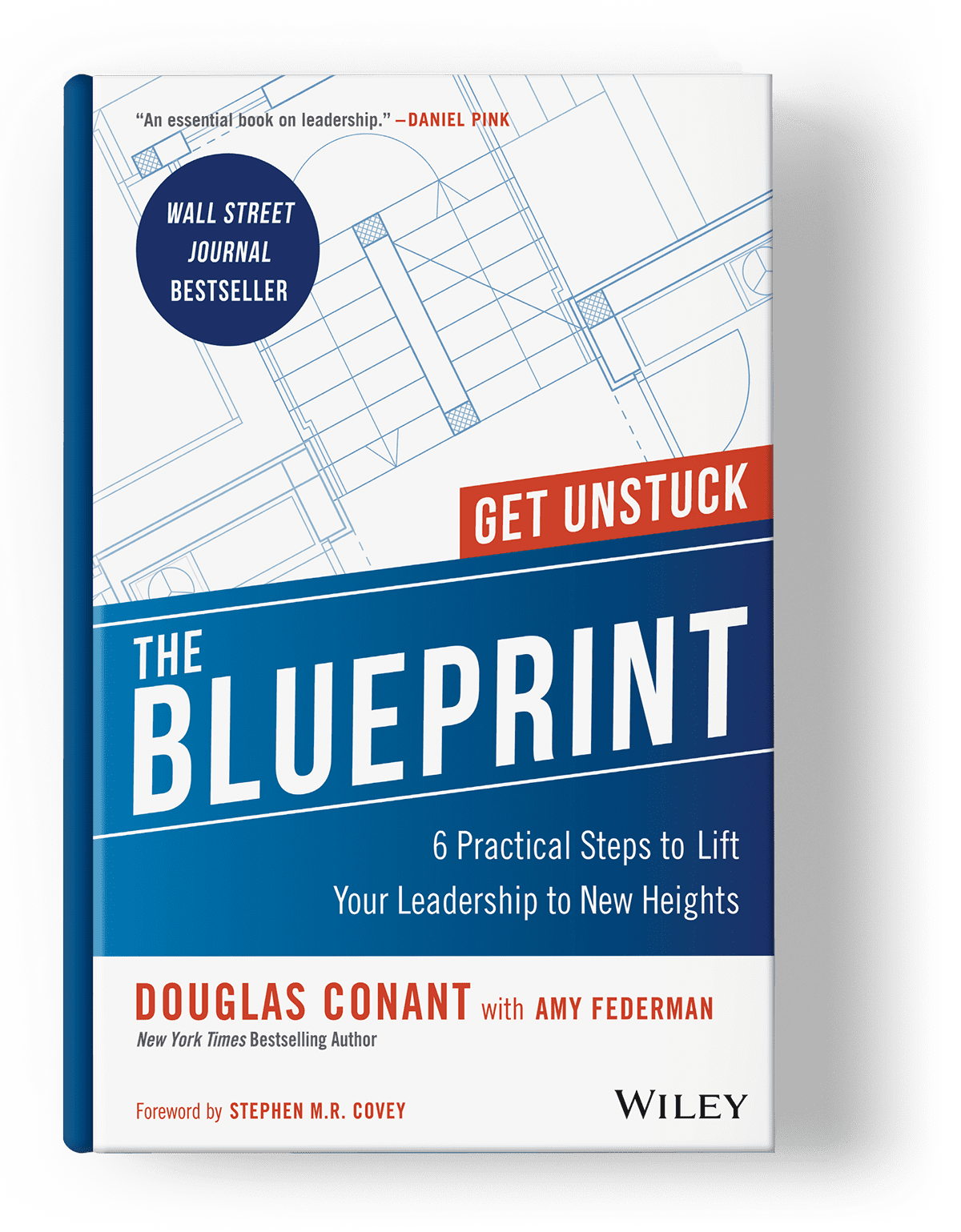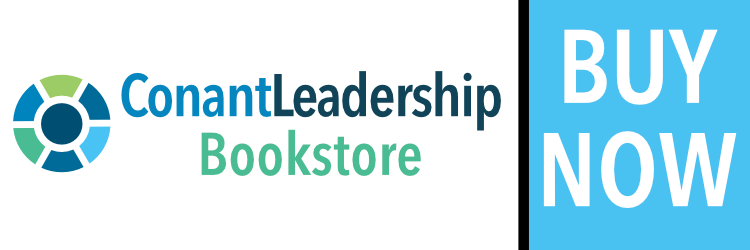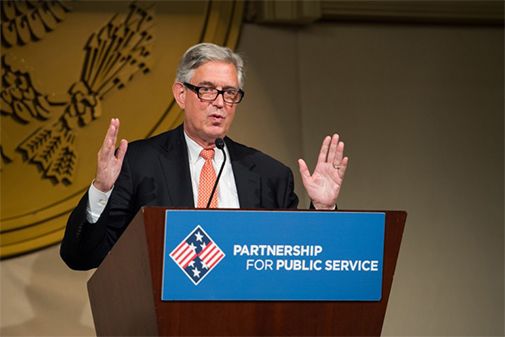At ConantLeadership, we’re committed to lifelong learning and continuous improvement. In service to your leadership growth, each month we curate the Leadership That Works Newsletter, a digest of timely resources from around the web. We prepare this resource in order to:
- Share actionable advice from top leadership luminaries
- Celebrate a range of viewpoints (inclusion is not an endorsement)
- Contextualize workplace trends through a leadership lens
- Illuminate cultural recalibrations in the world of work
- Support your personal development in life, leadership, and beyond
In this month’s Leadership That Works Newsletter: Build a better learning culture, lead through ‘change fatigue,’ the power of rituals, ‘maximizers’ versus ‘satisficers,’ bullish on blue-collar, small goals create big wins, the future of technology is human, and more. As always, we’re sharing the content from our newsletter here on our blog in case you’re not subscribed to our mailing list. If you find these links enriching, you can sign up to receive our newsletter right here.
Build Your Learning Culture Like a Neighborhood
- ‘Scenic bridges’: A means to close gaps and span divides.
- ‘University’: A place for intellectual debate and civil discourse alongside core tracks of study.
- ‘Theater’: A place to experience big ideas, improv solutions, and vicariously live and learn through others’ stories.
- ‘Library and archives’: A place to learn about the past, study timeless wisdom and seek institutional answers.
- ‘Nature trail leading to a reflection pool’: A passage for personal growth and contemplation.
Leading Through ‘Change Fatigue’
- Emphasize relationship building.
- Build alignment.
- Create a compelling case for change.
- Establish a clear vision and course of action.
- Prioritize transparent and consistent communication.
- Commit to listening and responding to employee needs.
- Recognize and celebrate successes, large and small.
- Be patient and understanding.
The Power of Rituals
In this Greater Good Magazine interview with Michael Norton, a Harvard Business School Professor and author of the new book, The Ritual Effect: From Habit to Ritual, Harness the Surprising Power of Everyday Actions, the power of rituals in our everyday lives takes center stage. First Norton is careful to distinguish the heightened experience of rituals from the more mundane practice of habits: If you perform an action without much thought, “like a robot,” then it’s probably a habit. But when you exalt an action with “more emotion and meaning,” and find fulfillment from “how you do it and how you feel about it,” then you’re in the territory of ritual. Norton says that rituals can help elevate “contexts that are supposed to be rational and financial,” and sees a great benefit to work teams. He uses the example of the New York Stock Exchange’s daily “ringing of the bell,” which unites the effort and takes on “ceremonial” importance. And his research shows that teams who report having unique activities and rituals “find their work more meaningful.” To reap the rewards of rituals on your team, Norton recommends giving employees the space to create their own activities because then “it’s more fun” and also “it’s less mandated” because it comes from within “instead of from management.” Get the full story here.
Are You a ‘Maximizer’ or a ‘Satisficer’?
“Each day, we are inundated with choices,” writes Jamie Friedlander Serrano in this Washington Post coverage of how to make better decisions amidst a sea of limitless possibilities. Often, the assumption is that all “the best decisions come from thorough, detailed analysis,” but “decades worth of psychological research” shows the opposite: “People who make ‘good enough’ decisions, instead of ‘perfect’ ones, are often happier,” and more effective in work and life. Experts say that most people fall into one of two decision-making camps: Maximizers, who place an outsized emphasis on arriving at the best possible course of action, and “satisficers” (a portmanteau of “satisfy” and “suffice”) who strive to make a “good enough” choice given the information available. At first glance, it may seem that the maximizers have the upper hand, but it’s the satisficers who tend to prevail. While the maximizers often get mired in “analysis paralysis,” it’s the satisficers who can “pull the trigger,” and then move on to the next task. The quest for perfection also keeps maximizers in a cycle of misery: They “tend to be less optimistic and more depressed,” and they “ruminate more, savor positive events less,” and are “more prone to regret.” Ultimately, when faced with the two decision-making styles, it’s better to err on the side of “good enough.” Get the full story here.
Small Goals, Big Results
1. Help people understand—and experience—the benefits themselves. Don’t mandate goal-setting; earn buy-in.
2. Celebrate the small wins. Mood matters and celebrating benchmarks elevates morale.
3. Use the right language in setting goals. Make goals “highly specific and actionable” for the best results.
4. Don’t forget the prerequisites. Create enough psychological safety to allow people to “share goals and achievements without fear of personal judgement.”
Get the full story here.
The Future of Technology Is Human
Satell writes, “once we stop imagining AI to be a super genius in a box,” then, “something much more valuable begins to emerge—a tool to create dialogues for ourselves.” He continues, “rather than using AI as a machine to spit out canned answers, we can use it as a tool to help us to explore possibilities,” and, “we can use these simulated conversations to enrich our real ones, bouncing ideas that we can sharpen as we collaborate and serve other humans, to seek out purpose and meaning that machines can not provide.” Using machines as a tool of support in exploring deep questions rather than as a replacement for human thinking is the key. Ultimately, says Satell, “the key to winning in the era of AI is not to try to compete with machines, but to become more human, to be a better listener,” and to work tirelessly “not to learn more about machines, but to learn more about ourselves.” Get the full story here.
**For more on this, keep an eye out for our upcoming limited monthly series, “EQ Answers to AI Questions” in which ConantLeadership Founder, Doug Conant, will provide thoughtful, human answers to pressing leadership questions generated by AI. Make sure you’re on our list to receive the first edition.
Conduct Interviews Like a CEO
Sample bank-shot question: What have you learned about our company beyond what you’ve read on the website?
Sample bank-shot question: What were important early influences that shaped who you are as a leader and colleague?
Sample bank-shot question: What leadership muscles did you build or strengthen during the intense period of disruption caused by the pandemic?
Sample bank-shot question: If your core expertise is your “major,” what is your professional “minor”? What interests you and why?
5. Essential Question: Are You a Team Player?
Sample bank-shot question: What is your playbook for influencing people who don’t report to you?
Get the full story including many additional sample questions here.
Bullish on ‘Blue-Collar’
“Blue-collar work—officially defined as jobs that handle or move material goods, and colloquially thought of as jobs that don’t require sitting in front of a screen—has once again assumed a competitive position within the American labor market,” writes Juliana Kaplan in this Business Insider coverage of a burgeoning blue-collar boom. In the long shadow of a pandemic that rendered many traditionally “white-collar” jobs expendable and elevated service and trade jobs to “essential,” blue-collar work now has a newfound “social cachet,” especially among young people who are increasingly disillusioned with pricey college degrees. As physical labor becomes more appealing to a wider swath of workers, the market is reflecting the shift in perception: “Demand is high, opportunities abound, and companies like Walmart and UPS offer six-figure salaries and lucrative benefits,” writes Kaplan. And, she notes, “the economy is adding blue-collar jobs at a rapid clip. Since April 2020, industries like construction, manufacturing, and transportation and warehousing have added 4.5 million jobs, compared with 4.1 million jobs in the professional services and information sectors.” Amidst tech sector layoffs and the looming presence of AI, all available data points to the trend continuing upwards. Get the full story here.
Insights & Resources from ConantLeadership
‘Stretch Your Cultural Comfort Zone’—Jane Hyun & Doug Conant on Cultural Fluency in Leadership
In this new blog resource, Doug Conant speaks with Jane Hyun, the world’s premiere expert on cultural fluency, about how to embrace cross-cultural effectiveness and lead a multicultural workforce.
‘Build a Courage Ladder’—2 Top Leaders on How to Be Competently Courageous
In this blog resource, Doug Conant and Jim Detert, two top leadership experts, give practical leadership advice for learning how to be competently courageous in a chaotic world.
Doug Conant on The Warren Bennis Leadership Institute Podcast
Doug Conant shares personal stories on this podcast about how he works to carry the leadership legacy of Warren Bennis with him every day.
52 Quotes about Trust and Leadership
Given the importance of trust, especially today, it comes as no surprise that this roundup of trust quotes has been one of our most popular posts of all time. So we’ve updated the piece as an “encore” with five new bonus quotes from ConantLeadership Founder, Doug Conant.
April’s Leadership That Works Newsletter
In last month’s newsletter: Close the workplace well-being gap, CEO tips for thriving in chaos, how to normalize and manage conflict, a practical guide to ‘happierness,’ 4 thinking traps to avoid in stressful situations, and much more.
 About the Author: Amy Federman is ConantLeadership’s Director of Content and Editor in Chief, and co-author with Doug Conant of the WSJ bestseller, The Blueprint.
About the Author: Amy Federman is ConantLeadership’s Director of Content and Editor in Chief, and co-author with Doug Conant of the WSJ bestseller, The Blueprint.
(Cover photo by Alex Vámos on Unsplash)

 Did You Miss The BLUEPRINT Leadership Summit?
Did You Miss The BLUEPRINT Leadership Summit?




0 Comments